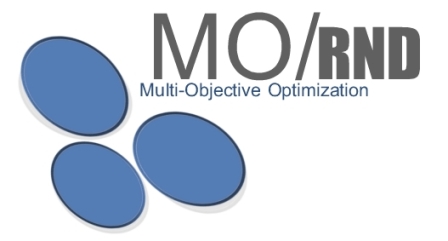Radio Network Design Optimization

Introduction.
MORND means Multi-Objective Optimization for the Radio Network Design Problem. This is an agnostic problem-oriented modelling. We deliver comparable sets of high quality experiments for domain specific “human beings”. MORND is based on a former problem, RND, tackled as mono-objective problem. Please, see more details in: "Benchmarking a Wide Spectrum of Metaheuristic Techniques for the Radio Network Design Problem". Sílvio P. Mendes et al. IEEE Transactions on Evolutionary Computation, Volume 13, Issue 5, 2009, pp:1133-1150.
Experimental datasets.
We have two play instance problems that allow experiment fine-tuning and initial analysis, one real-sized instance from a former project (mono-objective formulation) and one real-sized instance based on a real-world operator dataset. These are the experiment instances:
Dataset caceres.dat
• Size of the grid: 287*287 locations
• Maximum number of location sites: 349
• BS types: Isotropic (Omni-Directional)
• BS Wave Radius: 20 points
• Stopping Criteria: 250.000 FE (Fitness Evaluations)
• Number of individual Experiments: 30
Dataset la_laguna.dat
• Size of the grid: 287*287 locations
• Maximum number of location sites: 349
• BS types: Isotropic (Omni-Directional)
• BS Wave Radius: 20 points
• Stopping Criteria: 250.000 FE (Fitness Evaluations)
• Number of individual Experiments: 30
Dataset malaga.dat (used in OPLINK project)
• Size of the grid: 450*300 locations
• Maximum number of location sites: 1000
• BS types: Isotropic (Omni-Directional)
• BS Wave Radius: 30 points
• Stopping Criteria: 10.000.000 FE (Fitness Evaluations)
• Number of individual Experiments: 30
Dataset catalunya.dat (operator data)
• BS types: Isotropic (Omni-Directional)
• BS Wave Radius
• Stopping Criteria: FE (Fitness Evaluations)
• Number of individual Experiments: 30
Preliminary Tests.
Preliminary stage tests have to be performed in order to define reasonable human-defined boundaries for the search space of each problem instance. Upon these results, the following control parameters must be defined:
• Cover Rate thresholds (if any).
• Antenna Number thresholds (if any).
• Archive Size (number of non-dominated solutions that will be kept in memory).
Experimental considerations.
The following considerations have been agreed:
• For now, parallel approaches are not allowed (but distributing tasks is possible);
• In the report we will rely on the attainment surface for visual/graphical representation;
• MO evaluation metrics will be defined later and are post-processing based;
• Binary encoding is the same as used in the OPLINK project;
Operator homogenization.
The pool of possible operators has been defined as follows:
Crossover: Geographical Operator (GeoOp); Single Point Crossover (SPC); Algorithmic specific (ex: CHC and HUX)
Mutation: Random bit-flip (order of magnitude size of 1/length of the binary encoding bit string); Geographical mutation.
Algorithm Assignment:
AbYSS; CellDE; GDE3; FastPGA; IBEA; MOCHC; MOCell; MOEA/D-DE; pMOEA/D-DE; NSGA-II; ssNSGA-II; OMOPSO; PAES; SMPSO; SPEA2.
Recommended Indicators.
We recommend the following three Unary Indicators: The hypervolume indicator (Zitzler, 1998); The unary epsilon indicator (multiplicative and additive, Zitzler et al, 2003); The R2 and R3 indicators (based on those proposed by Hansen and Jaszkiewicz, 1998).
Coordinator/contact:
- Esta dirección electrónica esta protegida contra spam bots. Necesita activar JavaScript para visualizarla .
- Esta dirección electrónica esta protegida contra spam bots. Necesita activar JavaScript para visualizarla .
 Problems
Problems